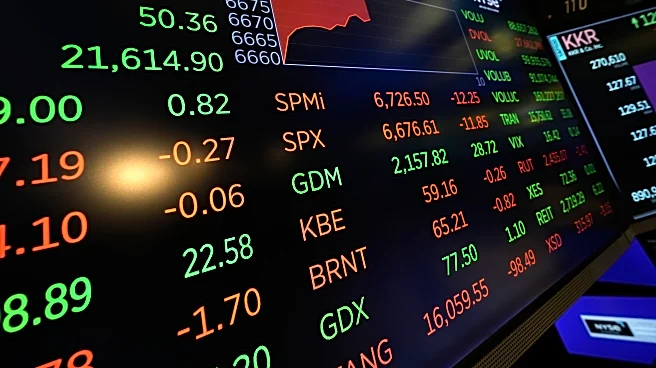What's Happening?
On October 3, 2025, U.S. stock indexes experienced mixed movements, with the S&P 500 and Dow Jones Industrial Average reaching new record highs. The S&P 500 increased by less than 0.1%, marking its seventh winning week in the last nine, while the Dow Jones climbed 0.5%. In contrast, the Nasdaq composite fell by 0.3% after losing an early gain. Treasury yields rose following mixed reports on the growth of U.S. services businesses, and crude oil prices rebounded from earlier losses. The Russell 2000 index, which tracks smaller companies, also saw an increase of 0.7%. For the year, the S&P 500 has risen by 14.2%, the Dow by 9.9%, the Nasdaq by 18%, and the Russell 2000 by 11%.
Why It's Important?
The performance of major U.S. stock indexes reflects investor sentiment and economic conditions. The continued rise in the S&P 500 and Dow Jones suggests confidence in the market, despite mixed economic signals such as fluctuating Treasury yields and oil prices. The increase in stock values can benefit investors and retirement funds, while also indicating potential economic growth. However, the decline in the Nasdaq composite highlights the volatility and uncertainty in the tech sector. The mixed reports on U.S. services growth and the rebound in oil prices suggest ongoing economic challenges that could impact future market performance.
What's Next?
Investors and analysts will likely monitor upcoming economic reports and corporate earnings to gauge the market's direction. The Federal Reserve's monetary policy decisions and geopolitical developments could also influence market trends. Stakeholders may focus on sectors showing resilience, such as energy, while remaining cautious about tech stocks. The market's response to these factors will be crucial in determining whether the current upward trend can be sustained.











